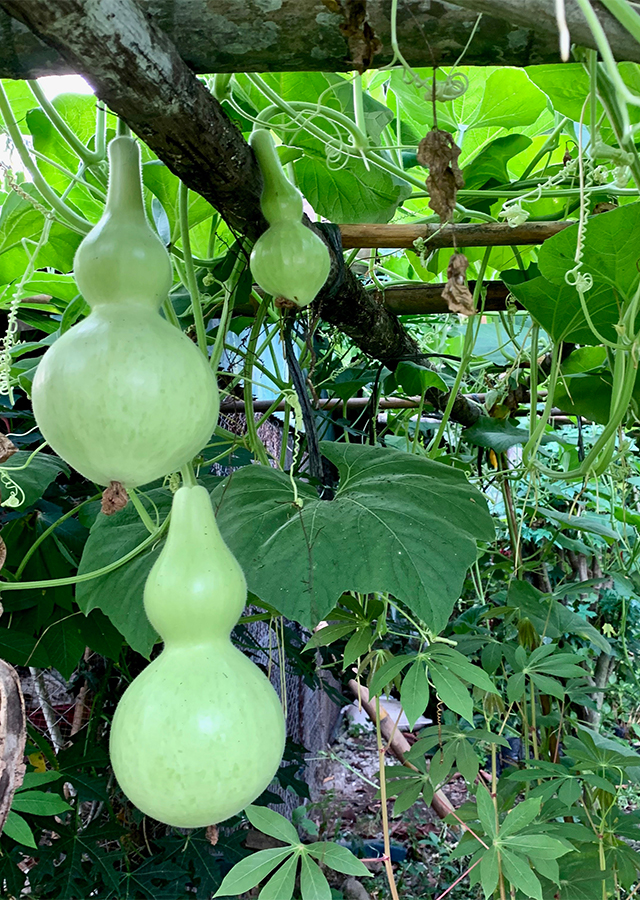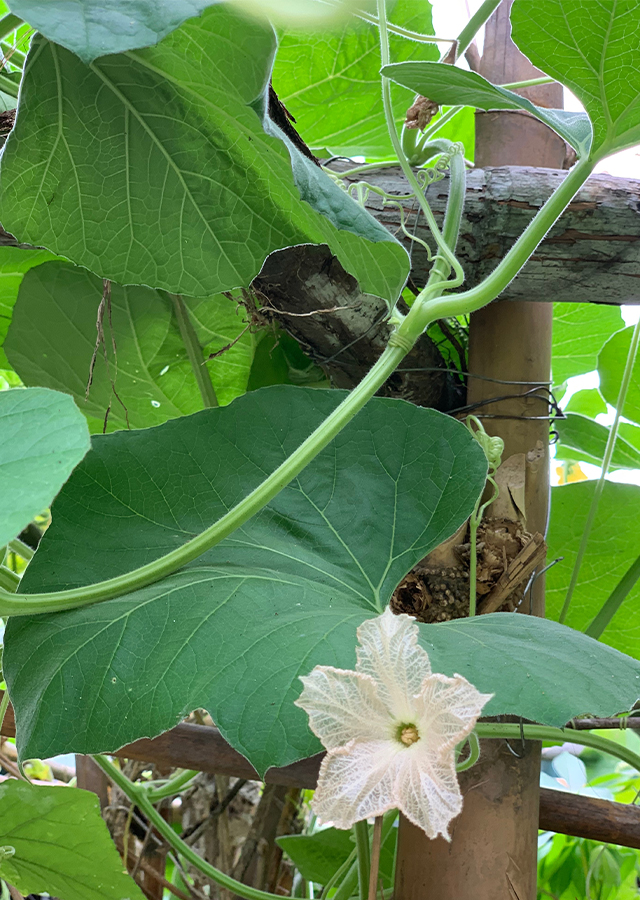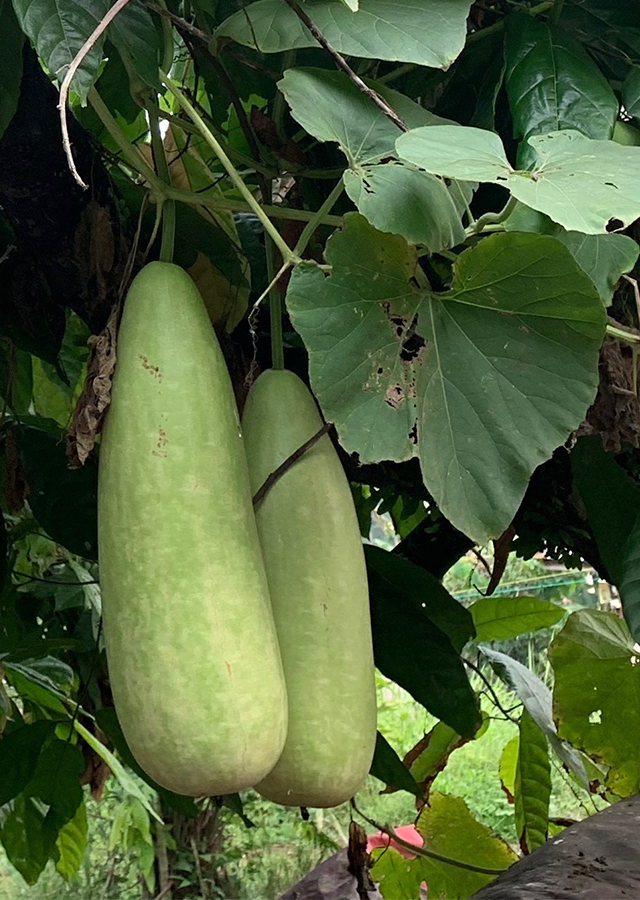Traditional Herbs from Lagenaria siceraria
fever
- Prepare enough water from the pumpkin and wash it until it is clean.
- Peel the pumpkin and take out the flesh then squeeze until you get the juice \u00bd glass.
- Drink 2 times a day in the morning and evening."], "medicine_boil
- Prepare a flask of water, take enough fruit seeds.
- Wash them until clean first.
- Pound the seeds until they become pulverized.
- Put them on the boil.
What is Lagenaria siceraria Looks like??



Parts of Lagenaria siceraria that could be used
Lagenaria siceraria Distribution
Many scientists say that the white pumpkin plant is native to Africa, Asia and America. This plant is widely cultivated in tropical and subtropical areas. This pumpkin has many uses, such as the young fruit can be consumed as a vegetable, while the old fruit is used as a storage container, decorative bag, and material for making musical instruments in Africa. Water and bottle gourds are also known to have properties as traditional medicinal ingredients.
Agroecology of Lagenaria siceraria
Bottle gourd can be found in the lowlands up to an altitude of 1,600 m above sea level, grows well at temperatures of 24-29 °C and rainfall of 1,200-1,800 mm/year. Likes moist, fertile soil with a pH between 5.8-6.4 and full sunlight.
Morphology of Lagenaria siceraria
- Square stem with twisting apparatus, hairy, spiral tendrils, green.
- Single leaf, heart-like at the base, serrated edge, white hairs on the lower surface, green.
- Monoecious flowers, greenish yellow, has 5 crown, 5 stamens, 3 pistils.
Cultivation of Lagenaria siceraria
- Multiply use seeds as seeds. Before sowing, soak the seeds first for 24 hours and transplant when 4 leaves appear.
- Harvest time: 60-90 days after planting.
Lagenaria siceraria, more details :
Chemical Content of Lagenaria siceraria
β-carotene, phytophenol, thiamin, riboflavin, niacin, pantoflanic acid, B6, folate, saponin, polyphenol, benzaldehyde, naphthalene, methyl N-hydoxybenzenecarboximidoate, linoleic acid, palmitic acid.
Benefits of Lagenaria siceraria
Activities as anticancer, antimicrobial, antioxidant, antibiotic, medicine for high blood pressure, diabetes, ulcers, reduces fever, and improves digestion.
Simplisia of Lagenaria siceraria
- Choose fruit that is fresh and not rotten. Peel the fruit and take out the seeds. Wash with clean running water then drain.
- Dry the seeds in the sun then cover with a dark cloth to avoid direct contact with the sun or dry in the oven (temperature 50-60\u00b0C ).
- Store simplicia in a closed plastic container/bag and at room temperature.
Another Facts for Lagenaria siceraria :
Synonym of Lagenaria siceraria
Cucumis lagenaria (L.) Dumort., Cucurbita ciceraria Molina, Lagenaria lagenaria (L.) Cockerell
Habitus of Lagenaria siceraria
Creepers. Annual vines, reaching 9 m in length
Habitat of Lagenaria siceraria
- Riverside
- Forest
- Bushland
- Grassland



No comments:
Post a Comment